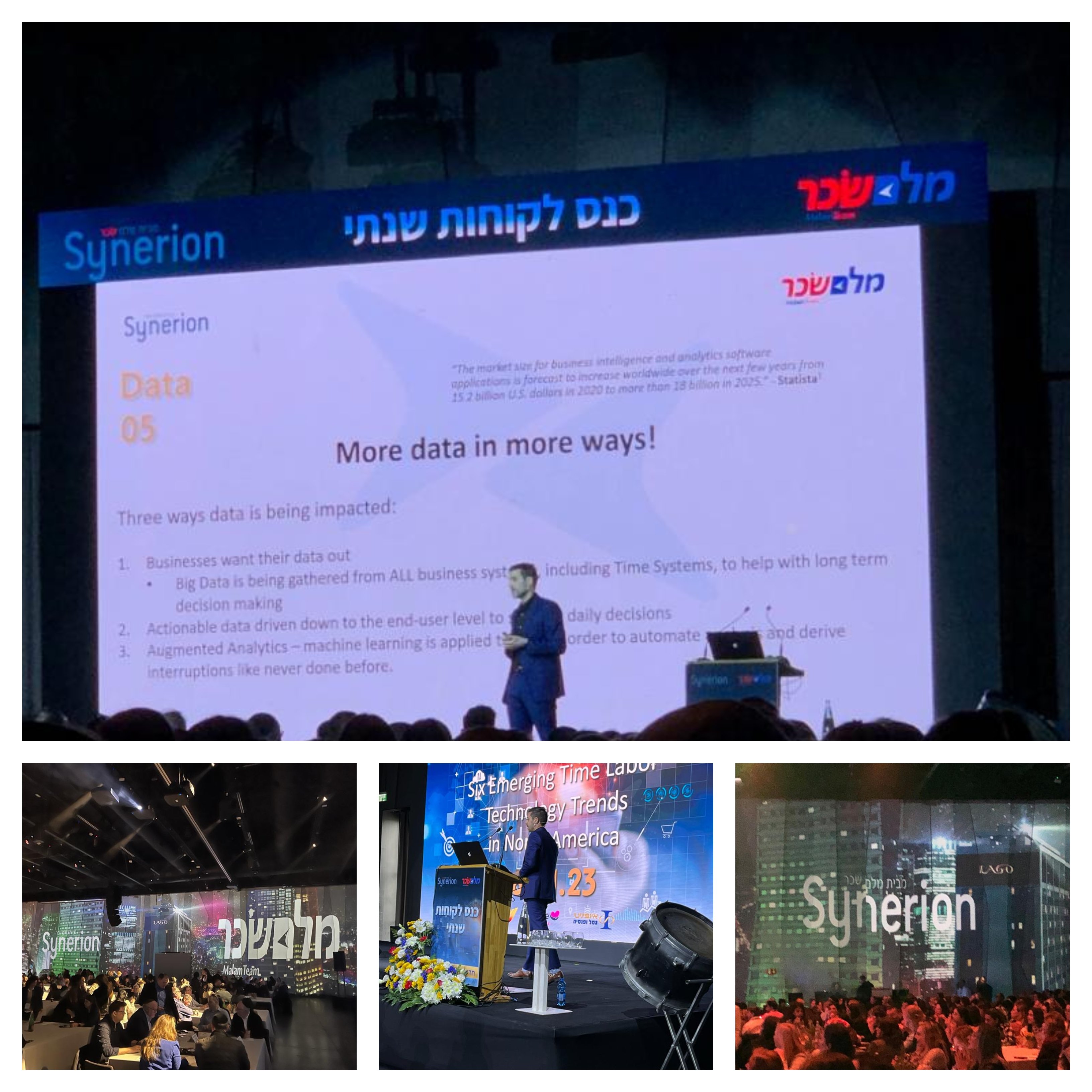In recent years, the workplace has experienced notable changes, which have forced many organizations to reevaluate how they work. One thing is sure–how we do work will keep evolving. Based on our experience working in the time and labor management industry, we put together six emerging trends that organizations need to know. These trends include:
-
Hybrid Workplaces
-
Employee Experience
-
Mobile Technology
-
Facial Recognition and Contactless Clocks
-
Data Analytics
-
Artificial Intelligence and Machine Learning in HR Processes
During our presentation at Synerion, we gave a deeper dive into each trend and discussed how they impact the time and labor management industry. However, we will like to share a brief overview of each trend below:
-
Hybrid Workplaces: Since the COVID-19 pandemic lockdown rules have eased, many employees have found it difficult to return to being onsite every day. Organizations have had to find a model that allows employees to work from wherever they want while also having a few days of onsite work—giving rise to the hybrid workplace. Gartner’s research has shown that more than six in 10 organizations have some sort of onsite requirement for employees whose work can be done remotely. In a hybrid workplace, employees can manage their week while still feeling connected to their organization. Hybrid workplaces will need to rely on time technology tools to help them manage employees’ productivity.
-
Employee Experience: According to Gallup, employee experience is “the journey an employee takes with your organization. It includes every interaction that happens along the employee life cycle, plus the experiences that involve an employee’s role, workspace, manager and wellbeing.” Technology systems have an impact on the employee experience. Time and scheduling tools must simplify time tracking and work scheduling processes, not complicate them for employees.
-
Mobile Technology: About 86% of the world’s population owns a smartphone currently. Companies need to leverage mobile technology with their employees because 2.7 billion workers worldwide (80% of the global workforce) are deskless. It’s easier for deskless workers to quickly complete their training, check for updates, and look up schedules on their mobile devices rather than rely on a desktop.
-
Facial Recognition and Contactless Clocks: In the post-pandemic world, companies will need facial recognition technology and contactless clocks for tracking employees’ work hours. According to Fortune Business Insights, “the global facial recognition market is projected to reach USD 12.92 billion by 2027.” This technology relies on biometric methods (scanning of facial features) when employees clock in and out—it’s easier, more accurate, and cost-effective for HR and payroll processes.
-
Data Analytics: Businesses gather data from different business systems, including time systems, and analyze them for long-term decision-making, such as labor forecasts. Today, we are seeing a trend in augmented analytics, where machine learning is applied to automate data analysis and business intelligence for organizations.
-
Artificial Intelligence (AI) and Machine Learning (ML) in HR Processes: Currently, AI and ML are changing the game for HR technology systems used for recruiting, succession planning, and reporting. We can expect to see AI and ML helping businesses with scheduling, data gathering, and reporting for time and labor management systems.

Chat GPT
The team at Synerion has decided to ask ChatGPT (a new AI bot) and get its thoughts on the topic of this blog. Below is the response it gave on this topic.